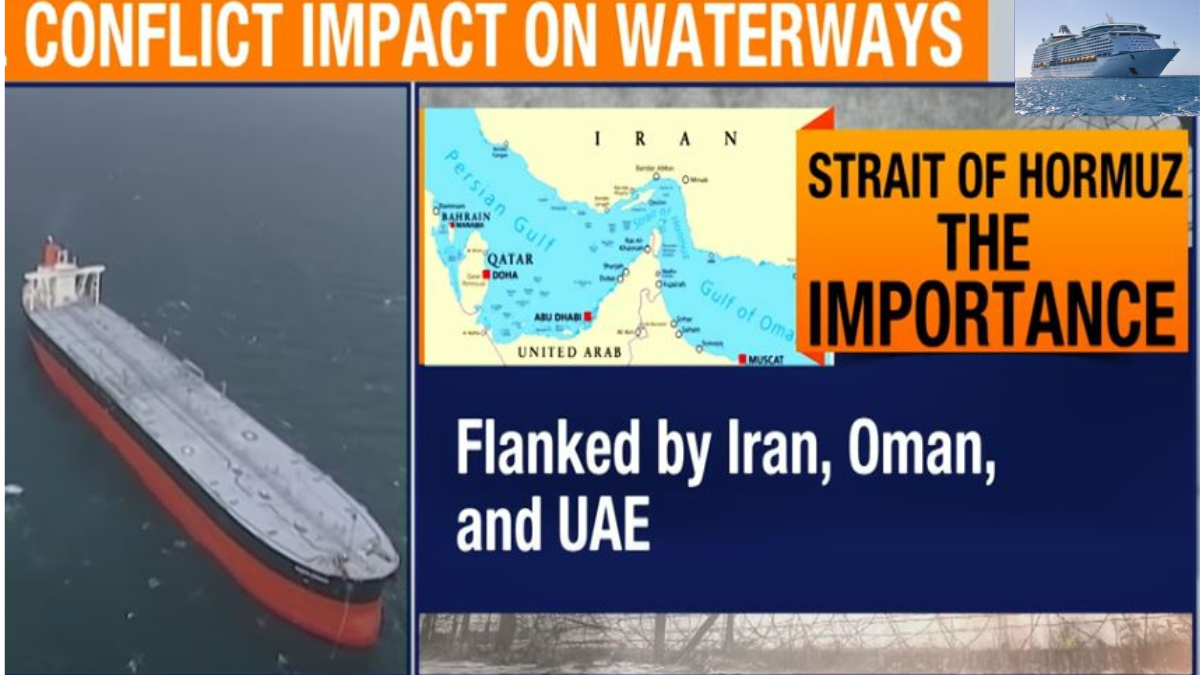As the Iran–Israel conflict escalates with strikes on energy infrastructure, India’s energy ecosystem is bracing for a potential shockwave that could reverberate across refinery margins, inflation and national security. At the heart of this looming crisis? The Strait of Hormuz a narrow waterway through which nearly 20% of global oil and 25% of LNG flows, including over 40% of India’s crude imports
Why the Strait of Hormuz Is a Game Changer for India
The Strait of Hormuz is critically important: about 18–20 million barrels per day of crude cross through it, linking Middle Eastern suppliers like Saudi Arabia, Iraq, UAE, Qatar, Kuwait with Asian consumers, including India.A closure or **blockade** by Iran even if temporary could trigger dramatic oil and LNG price spikes, send shipping and insurance costs soaring and squeeze Indian refiners and consumers.Analysts warn that a total disruption could elevate crude prices toward $100–120/barrel intensifying inflation pressures globally
Current Market Turbulence & India’s Energy Exposure
On June 16, 2025, Brent crude hovered around $75/barrel, up from $65–70 range driven by Israel’s strikes on Iranian facilities and escalating fears surrounding the strait en.Indian OMCs (IOC, BPCL, HPCL) are already grappling with 8–9% hike in freight costs and surging insurance premiums while oil supplies remain intact
Union Minister Hardeep Singh Puri confirmed that India is monitoring global oil supply daily, reassured on having 74 days of reserves, including strategic reserves.
What a Hormuz Blockade Could Mean for India
Skyrocketing Crude & LPG Prices
Even a partial closure spikes crude; a full blockade could devastate prices, according to analysts like Motilal Oswal and JPMorgan.
Inflation Surge
Higher fuel prices would ripple through transport, logistics, food inflation and put pressure on the RBI’s policy decisions .
Refinery Margin Squeeze
OMCs are already bleeding margin as retail fuel rates stay frozen while import costs rise
Import Diversification Woes
A strait closure leaves few alternatives: alternative pipelines are limited and costly, and Indian refiners rely heavily on Gulf routes .
Trade Fallout
Beyond energy, disruptions threaten rice exports, India–Israel trade ties, and could benefit markets like Pakistan via barter mechanisms.
India’s Strategic Buffering & Policy Response
India is not standing still:
Maintaining robust reserves (~74 days)
Exploring alternative pipelines and interconnects like Chabahar port and Northern Transport Corridor
Encouraging OMCs and refiners to model risk scenarios via agencies like GTRI timesofindia.indiatimes.com.
Diplomatic balance:
India urges restraint, maintaining “friendly relations” with both Israel and Iran, while urging de-escalation.
Global Context & Mitigation Outlook
Past precedents (1980–88 Iran–Iraq War, sanctions) show the strait has never been fully closed though threats often caused short-term disruption .
Global players like the U.S., OPEC+ China possess idle export capacity and could temporarily cushion supply gaps .
However, insurance and freight spikes alone can inflate landed costs, eroding Indian energy sector profitability.
What Lies Ahead: Watch These Triggers
India should monitor:
Iran’s A2/AD posture near Hormuz
Israeli strikes on Iranian oil/gas sites
Iranian threats to close Hormuz (last flagged June 14, 2025)
Freight rerouting, insurance hikes, and geopolitical alignment shifts across Gulf OPEC+ members .
Final Word: India’s Imperative Now
The Iran–Israel conflict is more than regional geopolitics it is a potential catalyst of an energy crisis for India. With 40% of imports passing through Hormuz, even short-term volatility threatens fuel affordability, inflation and economic stability.
Yet, India wears a multi-layered shield:
strong reserves, diplomatic neutrality, alternative pathways, and proactive policy planning. But action is urgent.For readers, businesses and policymakers, this moment demands vigilance, preparedness and strategic agility. Because when the Strait of Hormuz is in peril, so too is the lifeline of India’s energy future and by extension, its economic progress.
